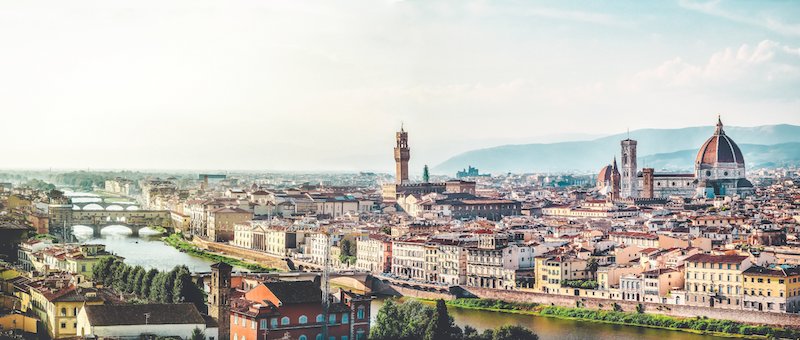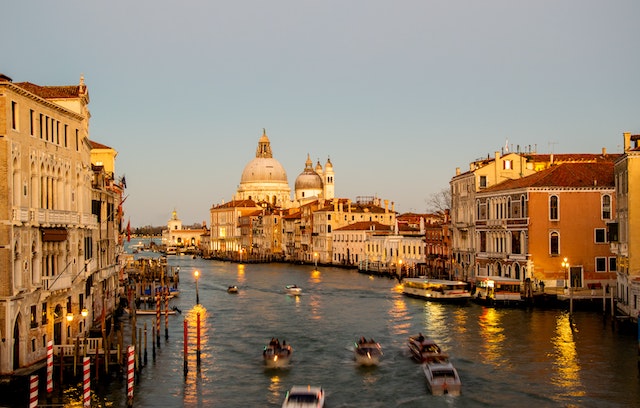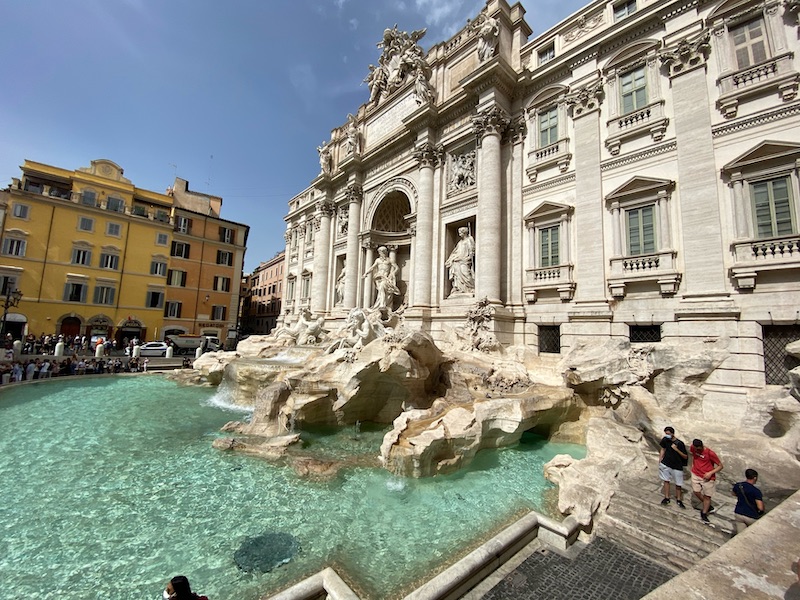In Italy, history stirs in the shadows of large cathedrals, ancient palaces, and soaring bridges. While commonly perceived as a Renaissance wonder, Gothic architecture tells a different tale-a tale of mystery and fine workmanship, a story expressed through stone and glass. Apart from these, quite widespread is the acceptance of the Gothic heritage across the length and breadth of Italy as the time of artistic and architectural aspirations.
The Majesty of Florence Cathedral
Florence – the cradle of the Renaissance – exemplifies classical Gothic architecture. The Cathedral of Santa Maria del Fiore, popularly known as the Duomo, exhibits Gothic and Renaissance qualities fused together. The huge red-tile dome by the architect Filippo Brunelleschi totally overshadows the rest of the building, but the marble panelled façade, intertwining white, green, and pink, possesses unique minuscule details typical of Gothic style. A transitory space with infinite splendour, the high-vaulted ceilings-internally eyed with some beautiful glass.

The Basilica of Santa Croce is another relevant example of Gothic architecture in Florence. This great Franciscan church not only serves as a mausoleum for such illustrious figures as Michelangelo, Galileo, and Machiavelli, but it also boasts magnificent Giotto frescoes and an imposing Gothic facade. The splendid ribbed vaults in the chapels with their great interiors are audibly celebrating the aspirations of the invention and substance of the period.
Venice: A Floating Gothic Wonderland
Travelling by train from Florence to Venice, one arrives in a city that almost seems like an illusion. Venice, known for its labyrinth of canals and romantic gondolas, is also home to some of Italy’s most striking Gothic buildings. The Doge’s Palace, an exquisite example of Venetian Gothic architecture, stands as an icon of the city’s political and artistic power. With its pointed arches, delicate tracery, and open colonnades, the palace epitomises the city’s fusion of Gothic elegance with Byzantine and Moorish influences.

Venezia – Picture by Dana Andreea / unsplash
Another masterpiece of Venetian Gothic is the Ca’ d’Oro, or “House of Gold.” This 15th-century palace, with its intricate façade and ornate windows, appears to float above the Grand Canal, showcasing the city’s commitment to architectural beauty. Additionally, the Basilica di Santa Maria Gloriosa dei Frari, another Gothic gem, houses remarkable artworks, including Titian’s famous “Assumption of the Virgin.”
Rome’s Gothic Treasures
From the romance of Venice, a journey on the Venice to Rome train transports travellers to a city known for its ancient ruins and Baroque splendour. Yet, Rome also holds hidden Gothic gems. The Basilica of Santa Maria sopra Minerva stands out as the city’s only true Gothic church. Located near the Pantheon, this basilica features soaring ribbed vaults, pointed arches, and stunning frescoes by Filippino Lippi. Unlike the typical Roman churches that boast Baroque opulence, Santa Maria sopra Minerva offers a glimpse into a different architectural era, where height and light were used to inspire awe.

While Gothic architecture in Rome is less prevalent than in other Italian cities, there are still noteworthy structures that reflect its influence. The Orsini-Odescalchi Castle, a fortress-palace hybrid near Rome, exhibits Gothic elements in its towers and battlements, offering a reminder of medieval Italy’s defensive architectural style.
Milan’s Gothic Crown Jewel
No discussion of Italian Gothic architecture would be complete without mentioning the Duomo di Milano. This cathedral, one of the largest in the world, took nearly six centuries to complete. Its exterior is adorned with a staggering array of spires and statues, while the interior features breathtaking stained-glass windows that cast colourful patterns across the vast nave. Climbing to the rooftop offers a unique perspective, with panoramic views of Milan and a closer look at the intricate details of its flying buttresses and elaborate sculptures.

The influence of Gothic architecture extends beyond the Duomo in Milan. The Basilica of Sant’Eustorgio, one of the city’s oldest churches, exhibits Gothic elements in its chapels and artwork, making it another noteworthy destination for architecture enthusiasts.
Siena: The Gothic City on a Hill
Nestled in the heart of Tuscany, Siena is another city where Gothic architecture flourishes. The Siena Cathedral, or Duomo di Siena, is one of Italy’s most magnificent Gothic structures. Its black-and-white marble façade, intricate mosaics, and majestic bell tower create an awe-inspiring vision. Inside, the cathedral boasts an elaborately decorated ceiling, a stunning marble floor, and masterpieces by Donatello and Michelangelo.
Beyond the cathedral, the Palazzo Pubblico and Torre del Mangia form the heart of Siena’s Gothic civic architecture. The palace’s grand hall, adorned with frescoes depicting the virtues of good governance, provides insight into the artistic and political aspirations of medieval Siena.
The Timeless Beauty of Italian Gothic
Italy’s Gothic architecture is more than just a historical relic; it continues to captivate and inspire. Whether it’s the intricate façades of Florence, the romantic palaces of Venice, or the soaring cathedrals of Milan, these structures tell stories of ambition, artistry, and devotion. Siena’s dramatic skyline, Rome’s hidden treasures, and Milan’s towering spires further add to the Gothic experience. Exploring these magnificent buildings is not only a journey through Italy’s architectural past but also an experience of its enduring magic.
As visitors trace the shadows of these timeless structures, they become part of a story woven through the centuries—a story of visionaries who sought to reach toward the heavens through stone, light, and unyielding creativity.



